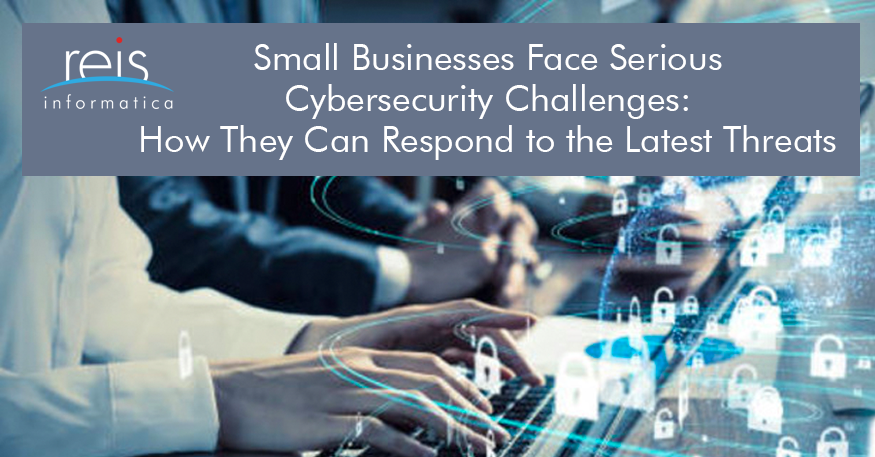Before the recent pandemic, 80 percent of small and medium-sized businesses (SMBs) identified cybersecurity as a top operational priority. Today, those concerns are even more imperative as everything from ransomware attacks to phishing scams increased in scope and consequence in the past year.
Especially for small businesses, which often lack the financial and personnel resources of their corporate counterparts, a cybersecurity incident can have outsized consequences. The average company can expect to pay nearly $4 million to recover from a breach, a significant sum that makes future business prospects untenable for many SMBS.
In other words, cybersecurity is an urgent, bottom-line issue that deserves attention today.
That’s why SMBs need to understand the unique cybersecurity challenges that define today’s threat landscape, using those insights to develop a response plan that meets the moment.

Cybersecurity Challenges for SMBs
SMBs face cybersecurity challenges on many fronts; however, according to Verizon’s most recent Data Breach Investigations Report, 85 percent of breaches involve a human element, offering insights into SMBs’ most vulnerable vector.
For example, phishing scams increased by 350 percent since the onset of the COVID-19 pandemic, increasing the likelihood that employees will accidentally compromise IT integrity or data security.
Meanwhile, SMBs chronically struggle to attract and retain sufficient cybersecurity talent. The US currently has more than 500,000 unfilled cybersecurity jobs, making it more difficult for small businesses to attract and retain in-house cybersecurity teams.
At the same time, one-third of SMBs cite budget constraints as a leading cybersecurity challenge, while nearly a quarter believe that employees not following guidelines as a barrier to IT security. As a result, an Accenture survey found that only 14 percent are prepared to defend themselves from a cyber attack.
Taken together, more than half of small businesses experience some form of a data breach or cyber attack each year. In response, SMBs can turn to several defensive strategies to better protect their digital assets.
Defensive Strategies That Work
SMBs have the power to address today’s most challenging and egregious cybersecurity threats. Here are three steps to get started today.
#1 Focus on Digital Hygiene
Some cybersecurity solutions don’t require a significant financial investment. Emphasizing good digital hygiene, like regularly updating passwords and software, can keep IT infrastructure secure.
One report helpfully defines this practice as the “accumulation of day in, day out investments and inconveniences by government, businesses, and individuals that make hackers’ jobs harder.” Improving better digital hygiene rarely requires additional financial investment, but it can go a long way toward improving an SMBs defensive posture.
#2 Enable Available Cybersecurity Functionality
Data breaches have steadily increased in scope and frequency in the past several years, putting many peoples’ login credentials at risk. Consequently, Microsoft notes that there are more than 300 million fraudulent sign-in attempts to its cloud services accounts alone, underscoring the importance of securing login credentials.
Two-factor authentication can keep accounts secure, even when login credentials make their way into the wrong hands. An industry report by the SANS Software Security Institute found that this feature thwarts 99.9 percent of account compromise attacks, making it an obvious next step for companies to secure their accounts and IT infrastructure.
Moreover, activating employee knowledge through awareness training and defensive best practices further enhances an SMBs cybersecurity capacity, turning a glaring vulnerability into a defensive asset.
Finally, SMBs should ensure that their firewall, anti-virus, and anti-malware are updated and properly configured. Collectively, these already available cybersecurity features can help keep SMBs secure.
#3 Seek Support From a Trusted Partner
It’s clear that cybersecurity is a significant challenge with incredible implications for SMBs. The strategies above will make a meaningful difference, but SMBs don’t have to engage in this battle alone. Turn to a trusted partner to conduct comprehensive risk assessments, provide practical guidance and technical expertise, and implement effective solutions.
Conclusion
At Reis Informatica, our cybersecurity division offers a global state-of-the-art cybersecurity department complete with all the talent, processes, tool stacks, and four worldwide locations to protect your business while reducing overall costs.
Cybersecurity is too important to leave up to change. Contact Reis Informatica today to request a complimentary business systems assessment to uncover any risks, issues, and concerns with your network.


.png?width=1080&name=GOOGLE%20REVIEW%20(1).png)